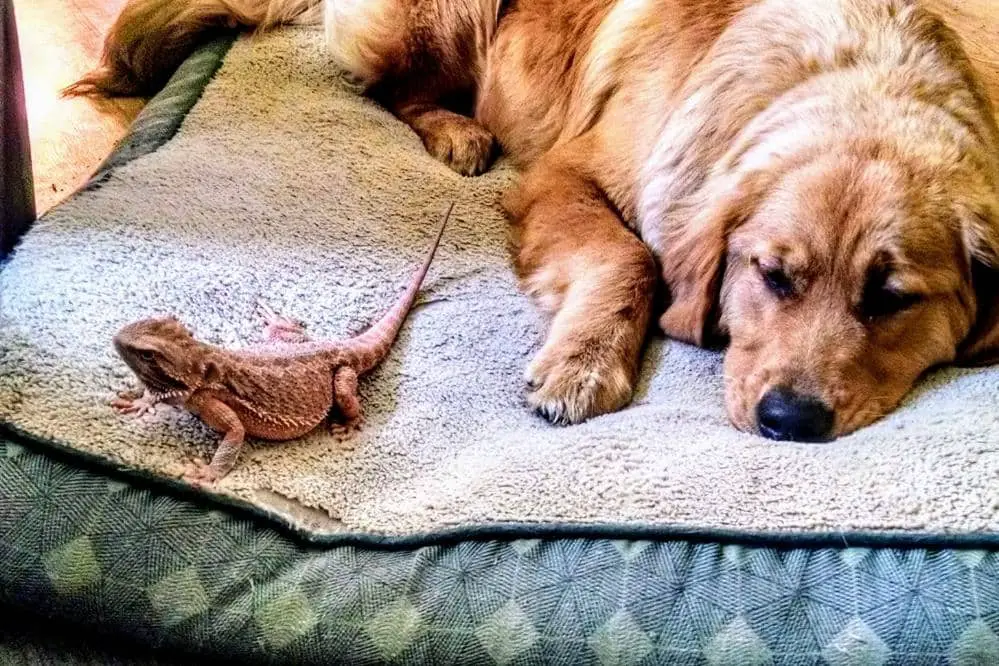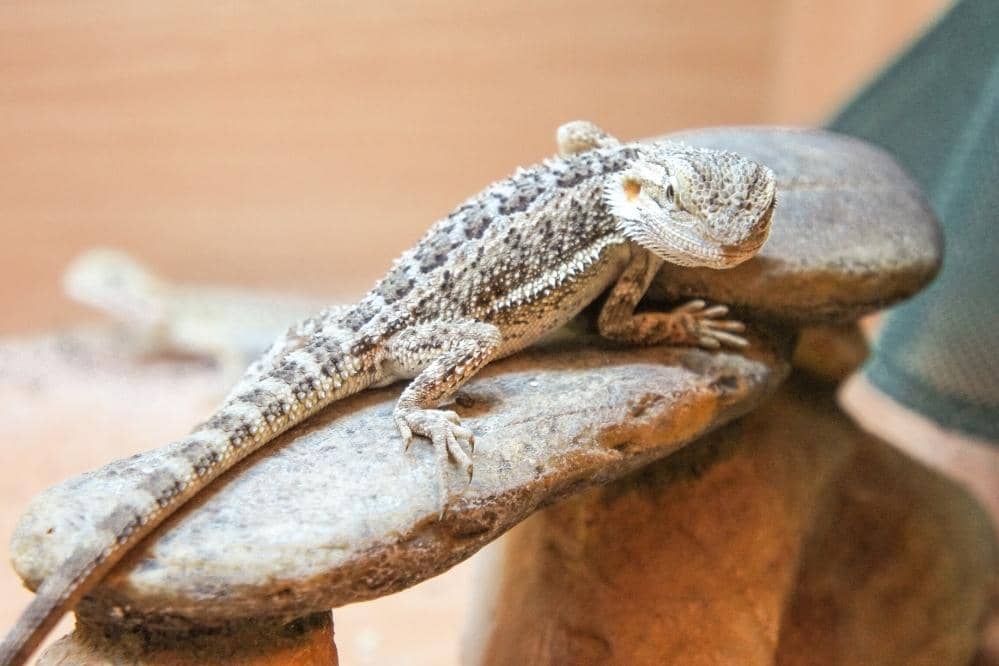Bearded dragons are unique creatures that exhibit a lot of bizarre behavior that not only feel amazing to see but sometimes also confuse the owners (especially the novice owners), and they wonder why their beardies are showing such behavior. Among all the weird actions, head bobbing and arm waving are the most interesting and fascinating actions to observe. If you are reading these lines, it means you also are trying to find the answer to the question, “why bearded dragons bob their heads?” Every time your bearded dragon bobs its head, there is a reason behind it. So it’s crucial to understand the reasons why your beardie bobs his head. Because you can take the best care of your pet only if you understand his body language.
Although it looks difficult to interpret such behavior however it’s not as complicated as it appears to be. To make things further easier, we have created a comprehensive guide explaining the reasons for head bobbing in bearded dragons. Simply scroll down to discover what you’re looking for.
5 Reasons Why Bearded Dragons Bob Their Heads
1. Territorial Instinct (Expression Of Dominance)
The first and most common reason for head bobbing is their territorial instinct. Naturally, bearded dragons are extremely solitary animals and don’t tolerate the presence of other animals (even of their own specie) in their territory. So whether in the wild or captivity, when something intrudes their territory (particularly another beardie), they express dominance to secure their domain. Head bobbing is one of their ways to show aggression, prove their dominance, and let the intruder know that this place is mine. In such cases, head bobbing is also accompanied by puffing up their beards. Puffing up is also a sign of aggression and annoyance because someone else is there. The best way to avoid this behavior is never keeping two bearded dragons in one place.
2. Warning Another Bearded Dragon
We can also take it as a subheading of territorial behavior. Bearded dragons have very good eyesight and can see from a long distance that another bearded dragon (or some other animal) is approaching their territory. So they start bobbing their head while the intruder is still away. Their aim is to frighten the intruder to make him change their path. By such intimidating behavior, they signal to the intruder not to come here, go away, this place is mine, or I am the boss here.
3. Signaling Submission
As mentioned above, when bearded dragons try to show aggression or dominance, the head bobbing and puffing up are seen at the same time. However, if they are bobbing their heads slowly and not puffing up, then it’s a sign of submission. This behavior is especially visible when you keep two bearded dragons in the same enclosure. One bearded dragon (usually the bigger one) tries to establish his dominance by quick and distinctive head bobs. On the other hand, if the second bearded dragon feels that the opponent is too big and strong for him to fight, he bobs his head slowly without puffing up to express his submission and message to the first bearded dragon that I accept you as boss here.

It’s crucial to note that sometimes bearded dragons can express submissive behavior to larger pets in the house (like dogs or cats) or their owners initially when they are not familiar with them. Place your beardie’s enclosure out of the reach of larger pets to avoid head bobbing. While the head bobbing due to the latter reason will diminish automatically once they become familiar with their owners.
4. Looking For Love Partner (Mating time)
When the mating season arrives, the male bearded dragons usually bob their head to look bigger and more attractive and show their willingness to mate with female bearded dragons. However, the head bobbing to show their willingness to mate is more rapid than they usually do to exert dominance. Females generally respond by waving their arms or very slow and delicate head bobbing. It is actually their way of showing their submission and willingness to accept males as mating partners. So it’s a natural behavior, and you don’t need to do anything to prevent it.
5. Depth Perception
All the animals, whose eyes are placed wide apart on their heads (like bearded dragons or rabbits), may move their head up and down (it seems like they are bobbing their heads) to determine the distance of something they are seeing. Naturally, an object at a greater distance will move less than a closer object. In this way, bearded dragons better understand their environment.
Why Do Bearded Dragons Bob Their Heads At Humans (Or Owners)?
It’s common for the newly adopted bearded dragons to bob their heads at their owners. They may exert this behavior for any of the reasons mentioned above. A newly adopted beardie may take his owner as a potential intruder and bob his head aggressively to frighten him to protect his territory and establish dominance. Contrary to this, he may bob his head slowly to show his submission and signal that “It’s OK, I accept you as a boss here” or “I don’t want any conflict.”
This is perfectly natural because, in the beginning, your bearded dragon is not familiar with you. As time passes, your beardie will begin to trust you, and the behavior will diminish or even disappear entirely. If not, You should look for other reasons.
Why Do Bearded Dragons Bob Their Heads While Sleeping?
Most bearded dragon owners become really concerned when they first see their bearded friend bobbing head while sleeping. However, if everything else is OK inside the tank, then it’s normal and nothing to worry about. Like humans, bearded dragons need a completely dark environment to sleep in. If the lights are left on during night hours, or you are using bright lights (e.g., red lights), these lights can interrupt their sleep. The stress and frustration due to frequent sleep interruptions induce head bobbing behavior.
Final Thought
Head bobbing is one of the many weird things that bearded dragons commonly do. It is actually a unique way of communication that our unique bearded reptiles use to communicate with other bearded dragons, animals, or humans. There are many possible reasons that can make your bearded dragons bob their heads. Most of the reasons are natural and disappear after some time. However, there are a few reasons that indicate problems. And the good thing is that such issues can be resolved quickly by making minor adjustments.
We have discussed all potential reasons for head bobbing in bearded dragons and their possible solutions. After reading the above lines, we hope that you can now interpret your beardie’s head bobbing behavior and act accordingly. However, if head bobbing continues too long, you must contact your vet immediately.

